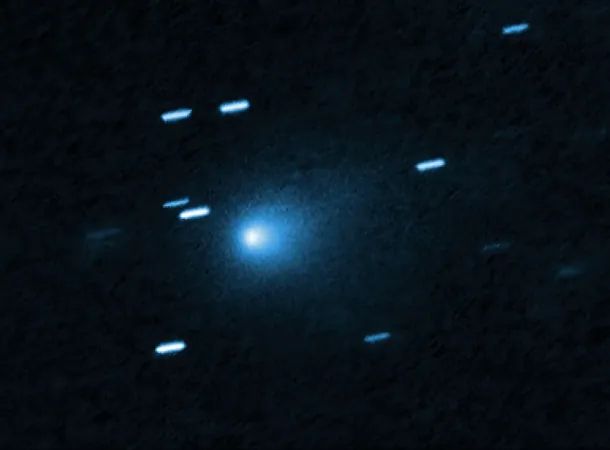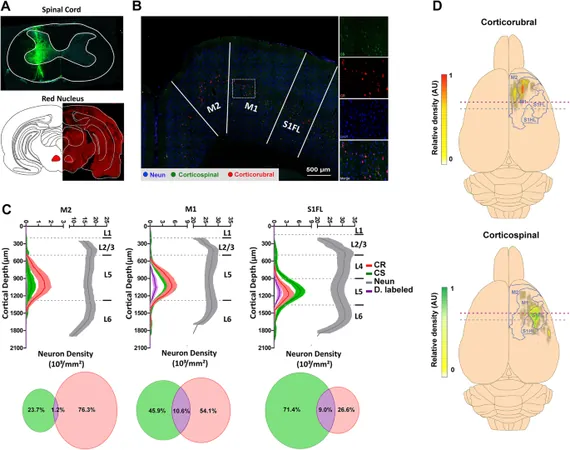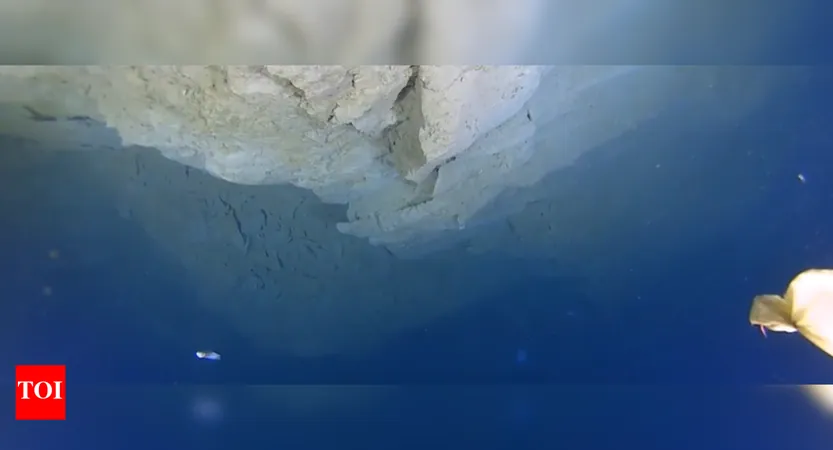
Stunning Discovery: TESS Spotted Interstellar Visitor 3I/ATLAS Two Months Before Its Official Discovery—And It Was Alive!
2025-08-28
Author: Arjun
A Cosmic Treasure Trove of Data
Imagine finding a long-lost treasure in your attic! That's what happened when astronomers repeatedly scanned the skies with various telescopes. They stumbled upon the interstellar object 3I/ATLAS—initially spotted in early July—but it turns out, this celestial wanderer was already visible as far back as May!
The Unlikely Detective: TESS
The Transiting Exoplanet Survey Satellite (TESS) isn't built for discovering cosmic visitors or tracking faint objects. Its primary goal is to look at bright stars and monitor exoplanets as they pass in front of those stars. However, thanks to some clever sleuthing by researchers Adina Feinstein, Darryl Seligman, and John Noonan, TESS's archival data became a goldmine for understanding 3I/ATLAS.
A Breakthrough Technique Unveils Hidden Activity
Going back to May 7, 2025, the researchers utilized a special technique called 'shift-stacking' to analyze TESS images. Since 3I/ATLAS zips across the sky much faster than TESS could typically track, they predicted the object's position, aligned multiple images, and stacked them to reveal a clearer signal of this elusive object.
The Mystery of Increased Brightness
During its journey from about 6.35 AU to 5.47 AU, 3I/ATLAS exhibited a staggering fivefold increase in flux. Initial speculations ranged from unusual data collection methods to outlandish theories involving alien technology. Interestingly, the researchers suggest a more down-to-earth explanation: the interstellar object likely expelled 'hypervolatile' materials like carbon dioxide and carbon monoxide, leading to that brightness surge.
A Differently Composed Cosmic Visitor
What's particularly compelling is that comets from outside our solar system, like 3I/ATLAS, may harbor compositions markedly different from those we know. Unlike typical comets that have depleted these hypervolatiles, 3I/ATLAS seems to be rich in them, showcasing the diversity of materials that exist beyond our cosmic boundaries.
Hurdles in Understanding Its Rotation
While the team also set out to determine the rotational period of 3I/ATLAS, they encountered difficulties. The haze surrounding the object, known as a coma, obscured any visible features, making it hard to detect changes in brightness linked to its rotation.
Unlocking the Mysteries of the Cosmos
As we chase down every new interstellar visitor, each piece of data enhances our understanding of these mysterious objects. This recent research sets the stage for more intriguing findings as astronomers aim to decipher the secrets held within the vast archives of telescopic data.




 Brasil (PT)
Brasil (PT)
 Canada (EN)
Canada (EN)
 Chile (ES)
Chile (ES)
 Česko (CS)
Česko (CS)
 대한민국 (KO)
대한민국 (KO)
 España (ES)
España (ES)
 France (FR)
France (FR)
 Hong Kong (EN)
Hong Kong (EN)
 Italia (IT)
Italia (IT)
 日本 (JA)
日本 (JA)
 Magyarország (HU)
Magyarország (HU)
 Norge (NO)
Norge (NO)
 Polska (PL)
Polska (PL)
 Schweiz (DE)
Schweiz (DE)
 Singapore (EN)
Singapore (EN)
 Sverige (SV)
Sverige (SV)
 Suomi (FI)
Suomi (FI)
 Türkiye (TR)
Türkiye (TR)
 الإمارات العربية المتحدة (AR)
الإمارات العربية المتحدة (AR)